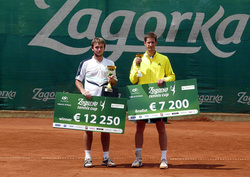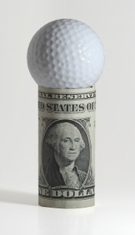So Marion Bartoli endures laddish stick from John Inverdale, puts a trembling Sabine Lisicki to the sword and walks away €183,350 richer for a fortnight at Wimbledon than Phil Mickelson did for winning the Scottish Open and British Open in successive weeks. That’s no surprise to those in the lower rungs of tennis, where new racquet strings and food poisoning are more pressing than the fantasy of a staged warm down or massage session.
The Californian lefty earned €579, 080 for his Scottish Open win and €1,097,570 from Muirfield, while Bartoli took €1.86 million for her 1 hour 21 minute win over Lisicki.

The analysis referred to in the Irish Times article comes from a report by Tennis New Zealand on the 'Tennis Poor'. The article points out, among other evidence, that:
The 400th ranked golfer on the money list earned $203,000 (€153,470) in 2011. To reach that kind of income in men’s tennis, a player in 2012 needed to be ranked 137 in the world and a woman needed to be ranked 107.
The Kiwis used the comparison with golf to show how the money alarmingly falls off in tennis after the 200 mark and how the game of Mickelson and McIlroy better catered for their entirety of players.
In 2012 the 200th ranked male on the ATP Tour earned $98,000 (€74,000). In golf the 200th ranked male that year earned $639,000 (€483,000). In 2012 the 250th male on the ATP Tour did not make any profit, while the equivalently ranked golfer made $461,000. Golf in fact kept on giving with the 300th ranked player earning $358,000 (€271,000) and the 350th male taking $264,000 (€200,000).
But of course this analysis is overly simplistic because economists do not 'compete' as sports people do and sports people require competition and rivalry, without which no sport exists. In any event, in this post I am more interested in trying to explain at least some of the difference in earnings between the two sports (golf and tennis).

Another, possibly more convincing, explanation has to do with the structure of competition in each sport. Golf typically has 'first past the post' tournament styles. In a field of up to 120 golfers only one can win and it can be clear after the first round (maybe even sooner) whether a particular golfer is likely to win or not. So how can organisers of tournaments incentivise competitors to keep playing and trying even when it looks like they will finish well down the field. The prize money at the Open at Muirfield shows that there are incentives for players to finish one place higher in the tournament rankings. (Of course some tournaments will also pay appearance fees to select golfers- though this will not affect effort directly so we can ignore this for the purpose of this argument). It's also notable from that prize list that players who miss the cut also receive prize money.
 RSS Feed
RSS Feed